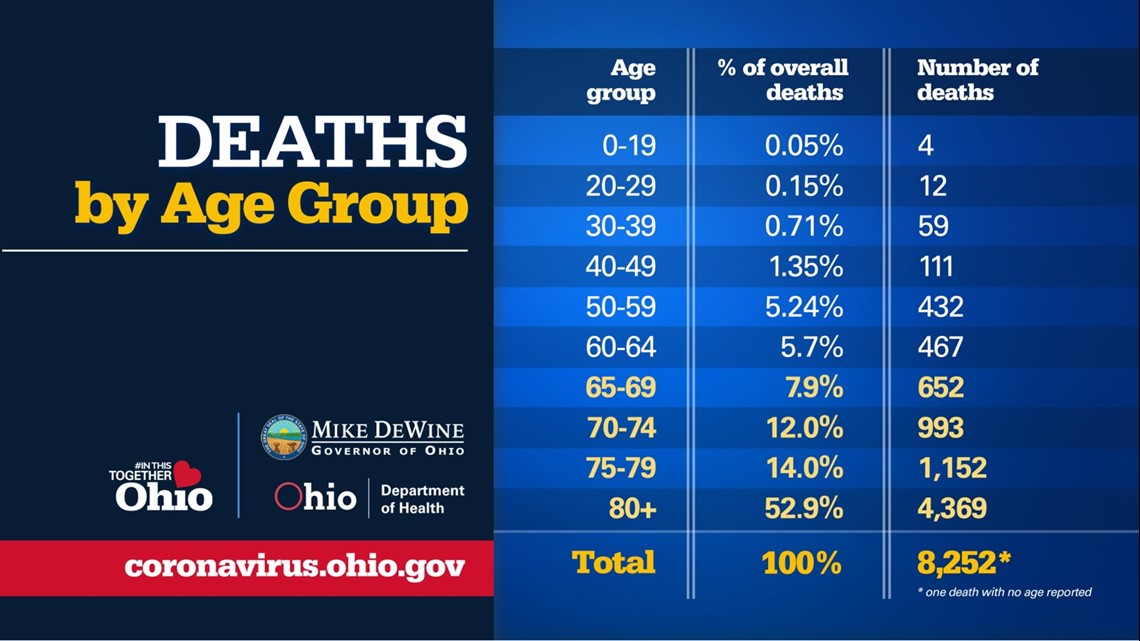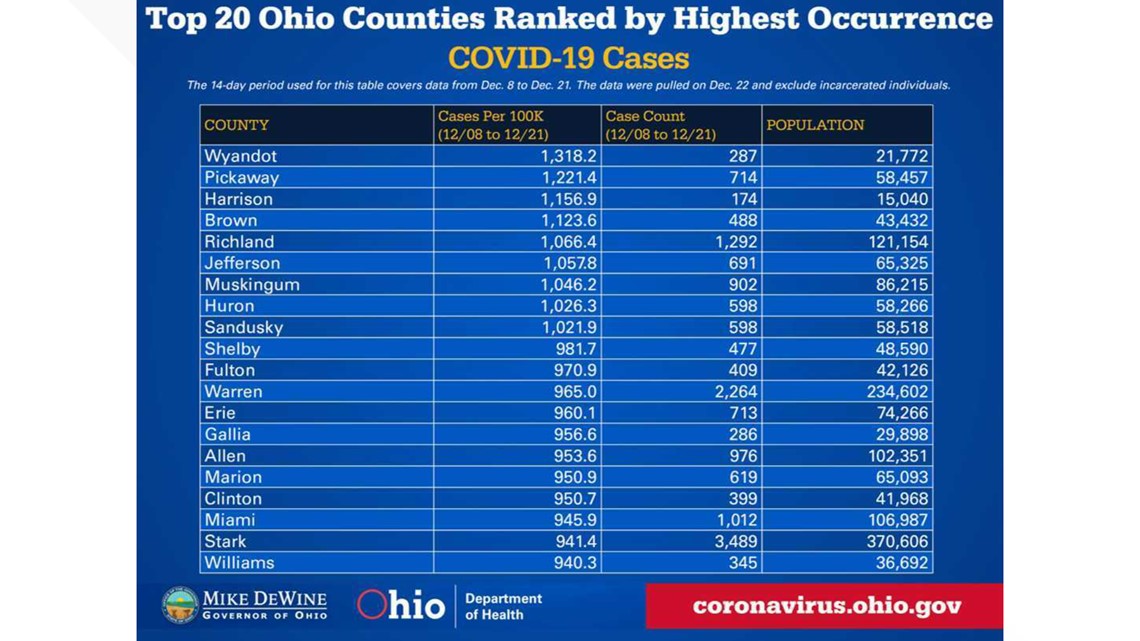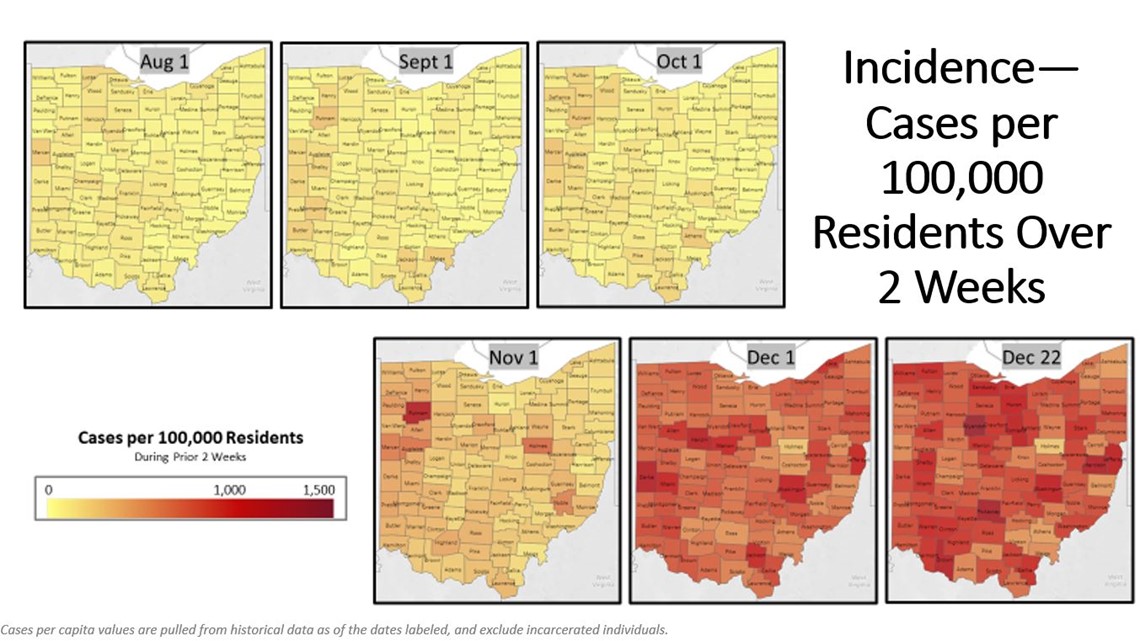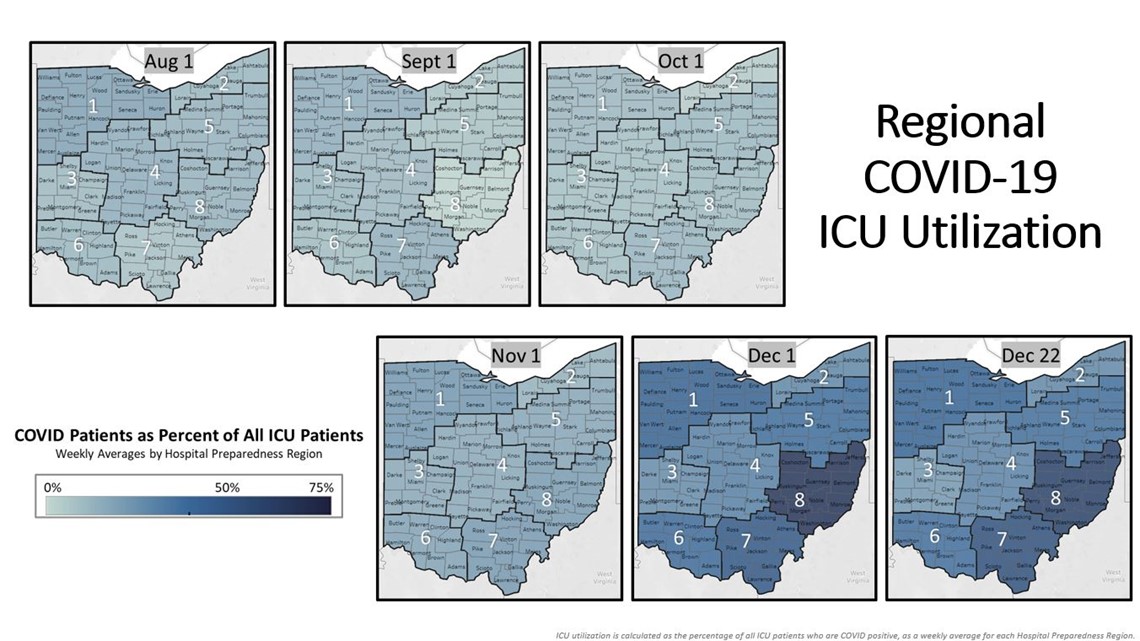COLUMBUS, Ohio — With both the Pfizer and Moderna COVID-19 vaccines now in Ohio, DeWine announced Wednesday the state's next step in distrubtion; naming seniors, those with developmental disabilities and school staff as next on the list.
DeWine warned that although the state is receiving more doses, it will likely be months before the vaccine reaches the general public.
WHAT'S HAPPENING NOW?
So far, the state has been operating under Phase 1a, with vaccines being prioritized for healthcare workers and those living and working in a number of congregate-care facilities, starting with nursing homes, where the state has seen its heaviest losses.
"It's not going to be done overnight. It's going to take weeks and weeks to do it, but we have the process in place to get that job done," DeWine said.
With those things in mind, the governor laid out the tentative next steps in the state's distribution plan.
WHO WILL BE VACCINATED NEXT?
SENIORS 65+
DeWine said Wednesday that the next broad category of people eligible to be vaccinated will be older Ohioans age 65+.
He unveiled a chart, demonstrating that Ohioans within that category make up just under 87% of COVID-19 deaths in the state.
DeWine said the state is working to determine the logistics of how the vaccines will be distributed.


PEOPLE WITH SEVERE INHERITED OR DEVELOPMENTAL DISORDERS
DeWine noted the state will also begin offering vaccines to younger people with severe inherited or developmental disorders that make them particularly vulnerable -- for example, Sickle Cell or Down Syndrome.
More specifics will be announced in the near future, he said.
SCHOOL STAFF
"Our kids are our future. It is our priority to get all of Ohio’s children in grades K-12 back in the classroom for in-person learning," DeWine said.
The governor said Wednesday that 71% of school-aged children in the state are not learning completely in-person, noting that many children struggle with remote education.
In response, the state will be making vaccines available to schools in an effort to accomplish the goal of getting kids back to class. Vaccines will be available to all schools that want to go back, or to remain, in person. All adults in the schools would have the ability to get a vaccine.
DeWine emphasized that at this point, no children will be vaccinated.
Additionally, the governor said the decision will always be left to the parents, on whether or not their child should return in person or continue learning from home.
The goal, DeWine said, is to start this phase around the middle of January, with the ability for any child that would like to go back to school in-person to do so in March.
CHRISTMAS CONCERNS
"We're heading into Christmas riding our highest wave of COVID-19 ever. Our cases, as you've noted are high, our hospitals are extremely busy, and that's in every corner of the state," ODH Chief Medical Officer Dr. Bruce Vanderhoff said. "Simply put: we can't afford to let this get worse. We really can't let our guard down between Christmas and New Year's."
Vanderhoff urged Ohioans to adjust holiday plans this year, and take precautions to keep themselves and loved ones safe. He reiterated the guidelines laid out under the state's current "Stay Safe Ohio" protocol, including:
- Stay at home
- Wear your mask
- Keep interactions short and stay apart
- Wash your hands
- Work from home
- Celebrate safe and celebrate small
- Don't eat or drink with anyone outside your household
- Limit travel
- Keep weddings and funerals safe
- Enjoy safe holiday activities
In response to the upcoming holiday, some Ohio schools have chosen to delay returning to the building for a week or so after the new year. DeWine asked other schools in the state to consider following suit, although he issued no order requiring schools to do so.
"It is a great way to create a buffer, a buffer between unintended holiday exposures -- which may occur -- in the classroom. We encourage our schools to consider this step," DeWine said.
KEY METRICS
On Wednesday, the Ohio Department of Health reported:
- 7,790 new cases of coronavirus, compared to the 21-day average of 9,852
- 109 new deaths reported compared to the 21-day average of 80
- 431 new hospitalizations compared to the 21-day average of 388
- 52 new ICU admissions compared to the 21-day average of 41
CASES PER 100,000 PEOPLE
The governor has encouraged Ohioans to refer to the state's list of counties in order of those with the most cases per 100,000 people to the list to gauge the status of the virus in their communities.
Currently, all 88 Ohio counties exceed the Centers for Disease Control and Prevention (CDC) threshold of 100 cases per 100,000 by at least three times.
On Wednesday, there were six northwest Ohio counties in the top 20, including Wyandont with the top spot. Wyandot County was reported to have 1,318.2 cases per 100,000 people, more than 13 times the CDC threshold.
The other counties in the top 20 were:
- Huron, with 1,026.3 cases per 100,000
- Sandusky, with 1,021.9 cases per 100,000
- Fulton, with 970.9 cases per 100,000
- Erie, with 960.1 cases per 100,000
- Williams, with 940.3 cases per 100,000


NEW MAPS
DeWine unveiled two new data maps that will be updated weekly for Ohioans, with information on cases per capita over time and ICU admissions over time.
PER CAPITA OVER TIME
DeWine said that even Ohio's counties with the highest incidence in August are lower than where the lowest counties are now. His team designed a new map to demonstrate how each county compares to others.


REGIONAL ICU ADMISSIONS OVER TIME
The second map released on Wednesday shows each "Hospital Preparedness Region" and what percentage of the ICU patient population are COVID-19 patients.
At the beginning of August, around one in eight ICU patients statewide had COVID-19. Now, it’s around one in three.



